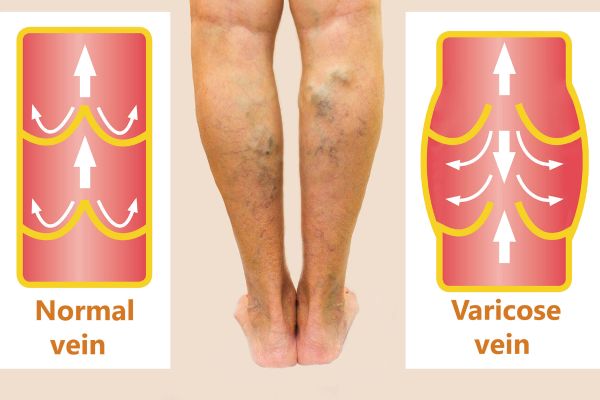 Varicose veins develop when the valves in the veins become weak or damaged. Veins have one-way valves that allow blood to flow back to the heart. When these valves fail to function correctly, blood pools in the veins, causing them to stretch and swell.
Varicose veins develop when the valves in the veins become weak or damaged. Veins have one-way valves that allow blood to flow back to the heart. When these valves fail to function correctly, blood pools in the veins, causing them to stretch and swell.
A common condition that may affect the veins in your legs and feet, varicose veins appear as enlarged, twisted and bulging veins that can be both unsightly and uncomfortable. Severe cases can even lead to more serious circulation issues.
Causes and symptoms of varicose veins
Factors contributing to the development of varicose veins include heredity, age, gender, pregnancy, obesity, prolonged standing or sitting and a lack of physical activity. Symptoms of varicose veins include:
- Visible, twisted and bulging veins
- Aching or heaviness in the legs
- Swelling
- Itching and burning
- Leg cramps
- Skin changes
Treatments
Treatment for varicose veins relieves symptoms, prevents complications and improves the appearance of the affected veins. Depending on the severity of your condition, a vascular specialist may recommend:
- Lifestyle changes
- Compression stockings
- Endovenous laser ablation, a surgical procedure using laser energy to close off the affected vein
- Microphlebectomy, a surgical procedure to remove smaller varicose veins through tiny incisions
- Ligation and stripping, an invasive surgical procedure involving the removal of the damaged vein, usually performed only in severe cases
- Sclerotherapy, a surgical procedure that injects a solution into the affected veins, causing them to collapse and fade over time
- VenaSeal, a surgical procedure that injects a glue into the affected veins, causing them to seal, eventually collapse and disappear over time
Call 770-812-VEIN (8346) to schedule a consultation to begin your transformation now.